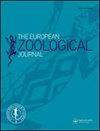单个或连续胚胎分裂对体外培养牛胚胎发育和形态动力学的影响
IF 1.6
4区 生物学
Q2 ZOOLOGY
引用次数: 2
摘要
胚胎分裂可用于牛体外生产(IVP),以提高胚胎利用率和增加选择强度。尽管有这种广泛的应用,但尚未对IVP胚胎在第2天(2细胞期)、第3天(8细胞期)和囊胚期分裂的活力进行比较研究。同样,未在牛中研究过非典型卵裂球数分裂第3天胚胎的适宜性,以及连续分裂卵裂期胚胎的可行性。在这里,我们证明了最有可能产生最大可活胚胎输出的策略是将第3天的胚胎分裂成四个部分,而不管使用的胚胎是恰好有8个细胞还是非典型数量的卵裂球。研究发现,这种方法平均每个受精卵产生1.8个囊胚,而非分裂对照的每个受精卵仅产生0.4个囊胚。单次分裂也优于连续分裂,虽然可行,但从受精后第7天的细胞数量判断,连续分裂损害了胚胎的活力。有趣的是,受精卵(≥2个细胞)在受精后第2天或第3天分裂一次,虽然产生的囊胚比对照胚胎小,但在囊胚阶段显示出比预期更高的细胞计数,这表明可能有一种补偿机制在起作用。事实上,延时图像显示,2细胞分裂的受精卵比第3天分裂或未分裂的对照组更早到达致密桑葚胚和膨大囊胚阶段。只有在第三次卵裂分裂之前,来自同一祖先的分裂之间的发育事件表现出良好的同步性。本文章由计算机程序翻译,如有差异,请以英文原文为准。
Effects of single or serial embryo splitting on the development and morphokinetics of in vitro produced bovine embryos
Abstract Embryo splitting can be used in cattle in vitro production (IVP) to improve embryo availability and to increase selection intensity. Despite this widespread utility, a comparative investigation of the viability of IVP embryos split at Day 2 (2-cell stage), Day 3 (8-cell stage), and blastocyst stage has not been undertaken. Similarly, the suitability of splitting Day 3 embryos with atypical numbers of blastomeres, and the feasibility of serial-splitting cleavage stage embryos, have not been investigated in cattle. Here, we demonstrate that the strategy most likely to produce the greatest output of viable embryos is the splitting of Day 3 embryos into four parts, regardless of whether embryos with exactly eight cells or an atypical number of blastomeres are used. This approach was found to produce 1.8 blastocysts per zygote on average compared to just 0.4 blastocysts per zygote for non-split controls. Single-splitting was also found to be superior to serial-splitting which, whilst feasible, impaired embryo viability as judged by cell number at day 7 post-insemination. Interestingly, zygotes (≥2 cells) split once on either Day 2 or Day 3 post-insemination, whilst resulting in smaller blastocysts than control embryos, displayed higher cell counts than expected at the blastocyst stage, suggesting a compensatory mechanism might be at play. Indeed, time-lapse imagery revealed that zygotes split at 2-cells reached the compact morula and expanded blastocyst stages earlier than either those split at Day 3 or non-split controls. Developmental events between splits originating from the same progenitor appeared well synchronized only up to the third cleavage division.
求助全文
通过发布文献求助,成功后即可免费获取论文全文。
去求助
来源期刊

European Zoological Journal
Agricultural and Biological Sciences-Animal Science and Zoology
CiteScore
3.10
自引率
5.60%
发文量
80
审稿时长
30 weeks
期刊介绍:
The European Zoological Journal (previously Italian Journal of Zoology) is an open access journal devoted to the study of all aspects of basic, comparative and applied protozoan and animal biology at molecular, cellular, tissue, organ, organismal, population, and community-ecosystem level. Papers covering multiple levels of organization and integrative approaches to study animal form, function, development, ecology, evolution and systematics are welcome. First established in 1930 under the name of Il Bollettino di Zoologia, the journal now has an international focus, reflected through its global editorial board, and wide author and readership.
 求助内容:
求助内容: 应助结果提醒方式:
应助结果提醒方式:


